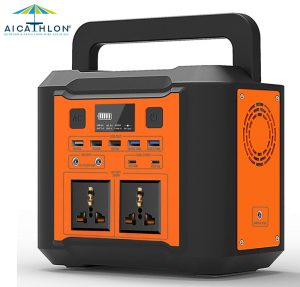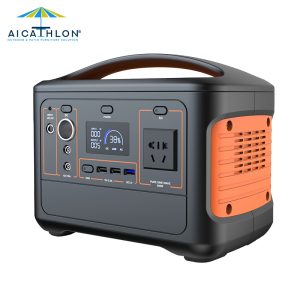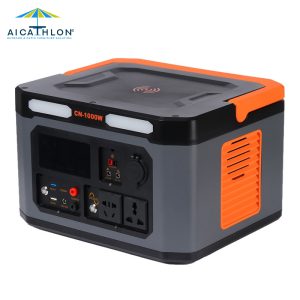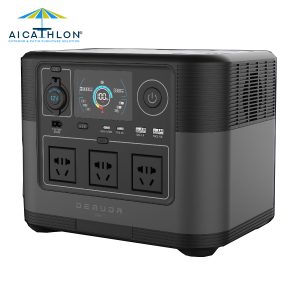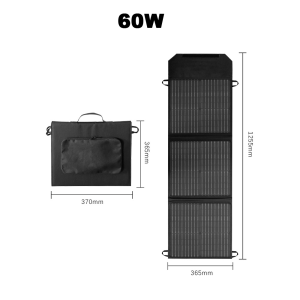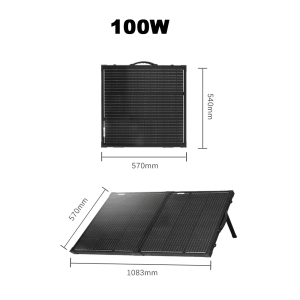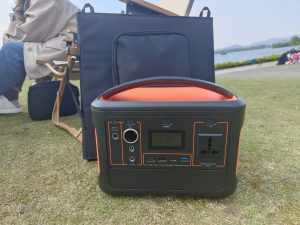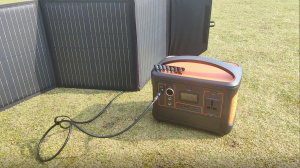More
Prolonging the Power: Factors Influencing the Lifespan of Outdoor Solar Powered Generator
Prolonging the Power: Factors Influencing the Lifespan of Outdoor Solar Powered Generator
Introduction:
Outdoor portable power stations have become indispensable for those who crave adventure, rely on electronic devices, or prepare for emergencies. These compact power hubs keep our gadgets charged, lights on, and appliances running, ensuring we stay connected and well-equipped wherever we are. However, understanding the factors that influence the lifespan of these power stations is crucial to maximize their utility and value. In this blog post, we explore the key determinants of the lifespan of outdoor portable power stations.
Charge Cycles:
-
Defining Lifespan: The lifespan of a portable power station is closely tied to the concept of charge cycles. A charge cycle represents the process of discharging and recharging the battery from 0% to 100%. Each full cycle contributes to the gradual degradation of the battery’s capacity.
-
Solid-State Battery Advantages: Many modern outdoor portable power stations incorporate solid-state batteries, which offer a significant advantage in terms of lifespan. Solid-state batteries are designed to endure an extended number of charge cycles, potentially exceeding thousands of cycles.
-
Extended Durability: The ability to withstand numerous charge cycles means that outdoor power stations with solid-state batteries are built to last for years, even with frequent use. This makes them reliable companions for your outdoor adventures and emergencies.
Material Stability:
-
Battery Materials: The materials used in the construction of the power station’s battery have a substantial impact on its lifespan. Solid-state batteries, in particular, rely on specific materials that are both energy-dense and stable over time.
-
Research and Development: The search for stable and long-lasting solid-state battery materials is an ongoing field of research and development. Scientists and engineers are continually working to identify materials that can endure the rigors of repeated charge and discharge cycles without significant capacity degradation.
-
Capacity Retention: A key goal is to minimize capacity loss over time. Battery materials that are prone to degradation result in reduced capacity and, consequently, a shorter lifespan. Advancements in material science are pivotal in maximizing the lifespan of power station batteries.

Proper Usage and Maintenance:
-
Temperature Management: Extreme temperatures, whether too hot or too cold, can adversely affect battery life. It’s essential to operate your outdoor power station within the recommended temperature range to ensure optimal performance and longevity.
-
Avoiding Deep Discharges: Deep discharges, or draining the battery to extremely low levels, can accelerate battery wear. It’s advisable to avoid deep discharges and recharge your power station before it reaches critically low levels.
-
Regular Use: Paradoxically, regular use can help prolong the lifespan of a power station. It prevents the battery from remaining idle for extended periods, which can lead to capacity loss.

Conclusion: Power That Endures
Understanding the factors influencing the lifespan of outdoor portable power stations empowers users to make informed choices and maximize the longevity of their devices. With advances in battery technology, the adoption of solid-state batteries, and careful usage and maintenance, your portable power station can be a reliable source of energy for many adventures to come. So, charge up and explore with confidence, knowing your power source is built to last.


